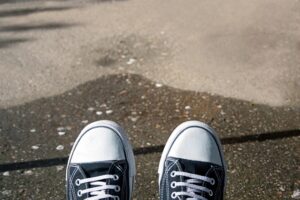Leave your shoes at the door
Whether they’re strict about it or not we all know someone with the “no shoes in the house” rule. Although some may find that policy annoying or even sometimes odd for guests you may want to consider adopting the practice for your own home.
I’m sure you’ve heard “a little dirt never hurt anyone”, but how about pesticides, lawn fertilizer, the flu, E. coli and C. diff? What is C. diff? It’s a dangerous bacterium that causes terrible symptoms from diarrhea and cramping to kidney failure and fatal inflammation. It’s nasty stuff but what’s even scarier is how possible it is that you’re carrying it or something similar around on your daily footwear! Something as simple as propping your feet up on the ottoman after a long day can actually be a bad idea.
Take a look at the numbers.
- The University of Arizona shared that the bottom of shoes contain on average 421,000 different types of bacteria, 96% detected coliforms (bacteria used to indicate the sanitary quality of water and food), and 27% detected specifically E.Coli.
- As shared by TODAY, a study by the University of Houston found that 26.4% of shoes carry that awful sounding C. diff.
- The University of Utah’s study concluded that bacteria on your shoes are transferred into your home at a rate of 90 to 99%!
So leaving your outdoor shoes on in the house is highly likely to carry quite a bit of bacteria throughout your home where you eat, relax, breathe and sleep. For healthy adults that may only bring a threat of being sick for a few days, but for children, elderly and people with compromised immune systems it can be extremely dangerous.
Still not sold on the daily practice of dropping you shoes at the entry mat? You can keep your home healthier by at least spraying them down with a disinfectant and then thoroughly washing your hands. It’s not as good as taking them off and spraying them down, but it’s certainly healthier than not doing either. And as Mom always said, “no shoes on the table.”
